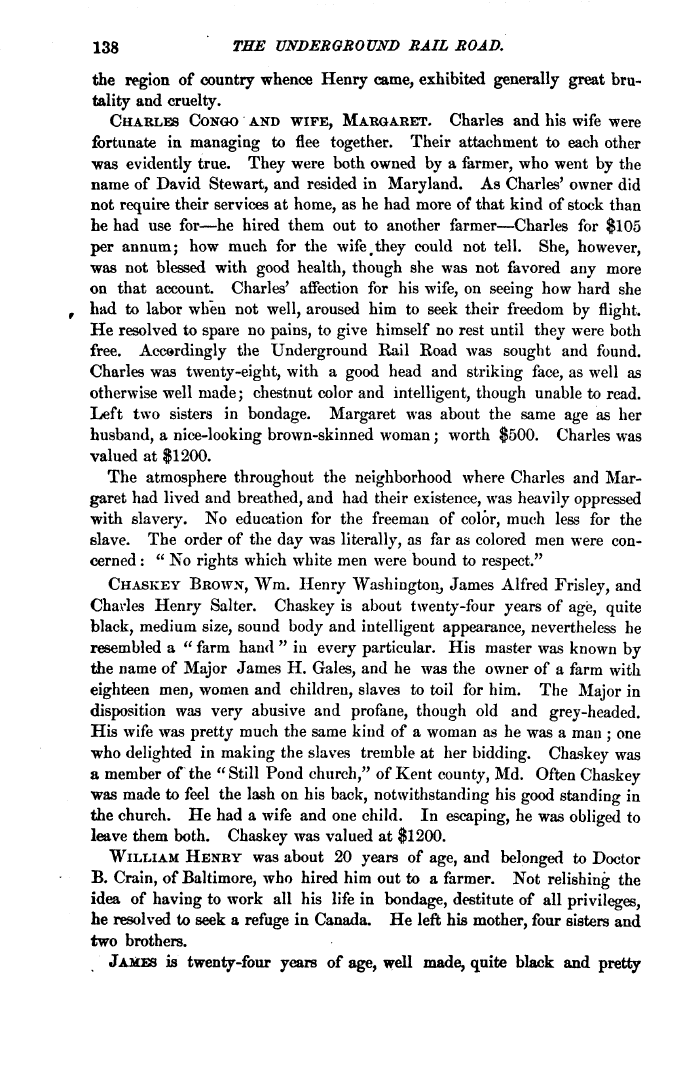 |
||||
 |
||||
| 138 THE UNDERGROUND RAIL ROAD. the region of country whence Henry came, exhibited generally great brutality and cruelty. CHARLES CONGO AND WIFE, MARGARET. Charles and his wife were fortunate in managing to flee together. Their attachment to each other •was evidently true. They were both owned by a farmer, who went by the name of David Stewart, and resided in Maryland. As Charles' owner did not require their services at home, as he had more of that kind of stock than he had use for—he hired them out to another farmer—Charles for $105 per annum; how much for the wifetthey could not tell. She, however, was not blessed with good health, though she was not favored any more on that account. Charles' affection for his wife, on seeing how hard she had to labor when not well, aroused him to seek their freedom by flight. He resolved to spare no pains, to give himself no rest until they were both free. Accordingly the Underground Rail Road was sought and found. Charles was twenty-eight, with a good head and striking face, as well as otherwise well made; chestnut color and intelligent, though unable to read. Left two sisters in bondage. Margaret was about the same age as her husband, a nice-looking brown-skinned woman; worth $500. Charles was valued at $1200. The atmosphere throughout the neighborhood where Charles and Margaret had lived and breathed, and had their existence, was heavily oppressed with slavery. No education for the freeman of color, much less for the slave. The order of the day was literally, as far as colored men were concerned : " No rights which white men were bound to respect." CHASKEY BROWX, Wm. Henry Washington, James Alfred Frisley, and Charles Henry Salter. Chaskey is about twenty-four years of age, quite black, medium size, sound body and intelligent appearance, nevertheless he resembled a " farm hand " in every particular. His master was known by the name of Major James H. Gales, and he was the owner of a farm with eighteen men, women and children, slaves to toil for him. The Major in disposition was very abusive and profane, though old and grey-headed. His wife was pretty much the same kind of a woman as he was a man ; one who delighted in making the slaves tremble at her bidding. Chaskey was a member of the " Still Pond church," of Kent county, Md. Often Chaskey was made to feel the lash on his back, notwithstanding his good standing in the church. He had a wife and one child. In escaping, he was obliged to leave them both. Chaskey was valued at $1200. WILLIAM HBNBY was about 20 years of age, and belonged to Doctor B. Grain, of Baltimore, who hired him out to a farmer. Not relishing the idea of having to work all his life in bondage, destitute of all privileges, he resolved to seek a refuge in Canada. He left his mother, four sisters and two brothers. JAMES is twenty-four years of age, well made, quite black and pretty |